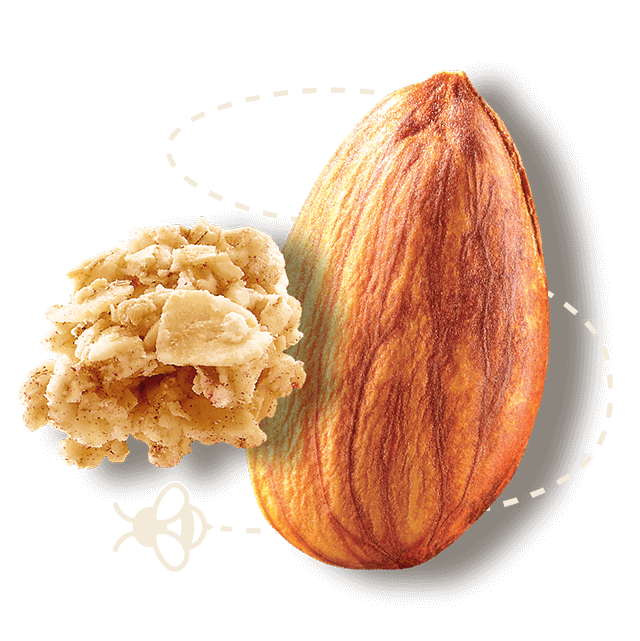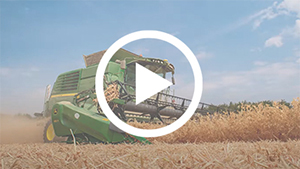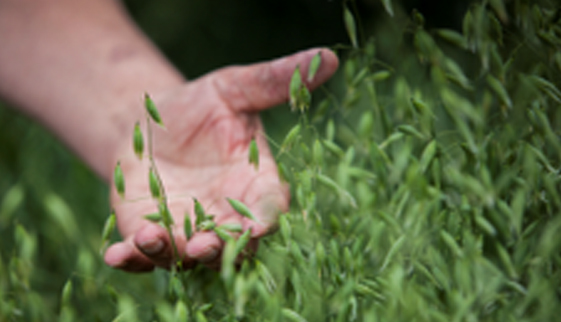
THE JORDANS FARM PARTNERSHIP
Caring for nature is at the heart of everything we do at Jordans (alongside making great granola of course)
What is the Jordans Farm Partnership?
We love that each of our British oat farmers go above and beyond for nature. More barn owls, hares, bats and butterflies? Yes please. But it’s not just about getting to spot more on your weekend walk. Nature in the UK is in trouble; big trouble. According to the Wildlife Trusts’ latest State of Nature report, one in seven native UK species face extinction and the farmland creatures that so many of us are familiar with are in particular trouble, for example: farmland birds have declined more severely than those in any other habitat.
It doesn’t have to be this way though. By working with our 31 British oat farmers, The Wildlife Trusts and LEAF, we’ve protected a staggering 4,060 hectares for wildlife over the last 5 years! We call this unique collaboration the Jordans Farm Partnership.
As part of the Jordans Farm Partnership, every one of our British oat farmers works with a dedicated wildlife advisor from their local wildlife trust to make sure at least 10% of their land is managed for the unique mix of wildlife on their farm (the average is currently at 17%). It could be that a certain area of land is managed so that ground-nesting birds have somewhere to shelter, or that grasslands are created for beetles. Every farm is different, and every farmer must work hard at maintaining these different wildlife habitats – sometimes even more so than growing their oats! Luckily, their Wildlife Trust advisor is always on hand to help them make the most of their land for wildlife. Learn more about what we’ve done with The Wildlife Trusts here.
At the same time, all of our farms are LEAF-Marque certified, making sure that their oats are grown as sustainably as possible, paying particular attention to soil health, carbon, water and minimising any inputs. We’re constantly looking for new ways to minimise our impact, running trials with different farmers to minimise any inputs into how our oats are grown and using regenerative farming practices to boost productivity such as cover crops. You can find out more about LEAF here.
But it doesn’t stop there: we wouldn’t have our fabulous countryside without supporting the people who protect it. That’s why we’ve supported The Prince’s Countryside Fund [PCF] since their launch in 2010, helping to fund farmer networks, community-run shops & pubs and to help young people gain crucial rural qualifications and build resilience.
So that’s the Jordans Farm Partnership! We have to say, we’re very proud of it. By working together with such brilliant farmers & partners, we’re able to not only produce great granola, but help protect nature – nature that needs our help more than ever before.

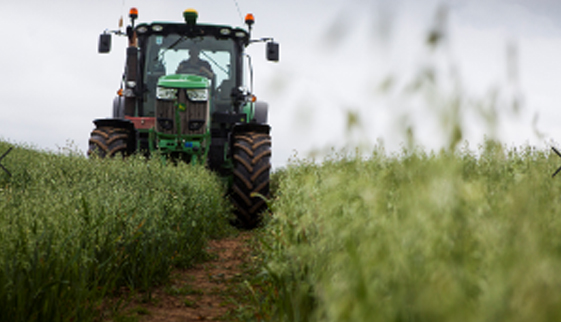
REDUCING FOOD MILES
We like to keep things local when we can and over half of our Jordans Farm Partnership oat farmers are within 50 miles of our bakery in Biggleswade. When we do get ingredients from abroad, however, we always look to use sea freight to make sure they’re coming with the lowest impact possible.
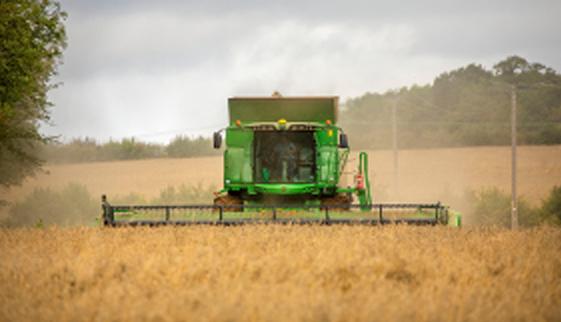
Supporting Farmers of the future
The Jordans Farm Partnership isn’t just about today, we like to look to the future too. That’s why we work with The Prince’s Countryside Fund, setting up The Sustainable Agriculture Bursary. Set up in 2019, the bursary scheme is currently supporting 11 talented agriculture students at the University of Reading & The Royal Agricultural University to gain experiences in sustainable agriculture that will help them become the nature-friendly farmers of the future. We do this alongside mentoring, alumni activity, helping them create a standout CV and much more.
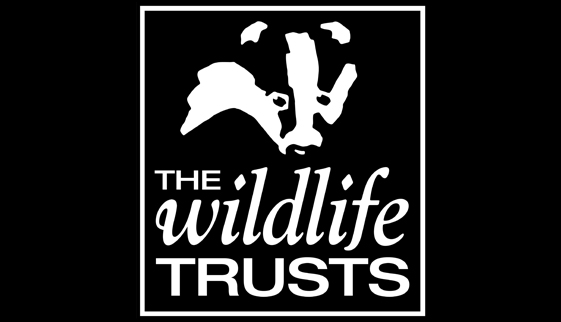
Working with The Wildlife Trusts
We work with the Wildlife Trusts as part of a unique collaboration between our brilliant British oat farmers, The Wildlife Trusts, LEAF (Linking Environment And Farming) and The Princes Countryside Fund. This makes sure that not only are our oats grown sustainably, but that wildlife benefits too. Every one of our 30+ British oat farmers dedicates at least 10% of their land to wildlife areas (and currently, the average is around 17% of land). They then have a dedicated wildlife advisor from their local Wildlife Trust create a bespoke plan for them to make sure that land is really working for the unique mix of wildlife found on their farm.
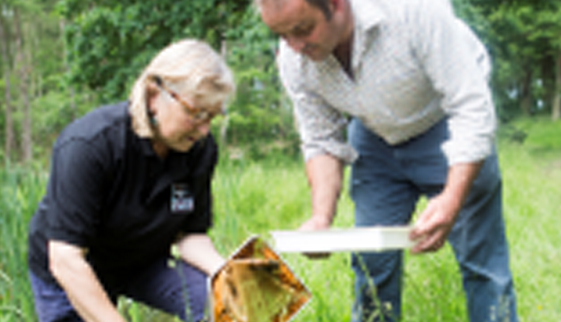
Meet our farmers
‘So how do you make my bowl of cereal good for nature?’, we hear you ask. Well, we got some friends involved. First of all, we work with some brilliant farm partners. People like Guy below.
Guy Tucker
Greenhil Farm, Hertfordshire
Giving Back
A third-generation farmer, Guy didn’t feel comfortable with the way that the farm was being managed. He felt it could do more to give back to the landscape that had given his family a livelihood for decades. So, in 2003 he began to farm in a more wildlife-friendly way; establishing grass margins around fields, restoring hedges, introducing crops to help feed wild birds and sowing pollen and nectar rich areas - all providing vital space for wildlife. As a result, Guy saw wildlife returning to his farm and he soon felt happier and more fulfilled farming in this way.
As a natural next step, Guy became a supplier of oats to Jordans. This helped him to do even more for wildlife and feed his passion for the natural world. All this has paid off for Guy - following a farmland bird survey, he was delighted to discover that over winter, his farm boasted the largest flock of linnets and bramblings recorded in Hertfordshire!

Stephen Honeywood
Halls Farm, Suffolk
“The countryside means everything to me – not just growing crops but enhancing the environment for future generations.”
As Nature Intended
Stephen is a farmer who loves the countryside where he lives and believes in enhancing it for future generations. That is why he chose to manage Halls Farm in a way that gives nature the space to follow its own path. Stephen lets hedges thicken and spill out to create wonderful wide scrubby habitat and he sows large areas of farmland with cover crops for wild birds. He doesn’t worry about being over-tidy. This approach has created more habitat and food for wildlife on his farm.
Stephen will happily take time out from farming to install barn owl boxes. He also hosts visitors and groups on his farm to help them understand his management style or to undertake wildlife surveys. Stephen also manages the adjacent Little Haugh Farm where graceful silver-washed fritillary butterflies, a species of conservation concern, flourish in the woodlands. Thanks to the way that Stephen manages habitat on his farms, this species is now colonising Halls Farm next door. As it spreads, the population of this butterfly will become larger and less vulnerable.

Nick Rowsell
Manor Farm, Hampshire
“When I’m walking through the crops and I look around me, and everything is great, I have a little moment and think how lucky I am. My favourite sign of summer is when the swallows arrive.”
Network of habitats
Nick, a 3rd generation farmer in north-west Hampshire, has been growing oats for Jordans on his family farm for several years.
The farm lies within the tranquil landscape of rolling chalk hills. These chalk grasslands are one of the most threatened in the UK, with vast tracts being lost to intensive agricultural production over the last century. Through the Jordans Farm Partnership and his commitment to wildlife-friendly farming, Nick is helping to reverse this loss by recreating and restoring this important habitat on his farm, benefitting the specialised plants and animals that depend on it.
Alison, Nick’s Wildlife Trust advisor, has supported him in managing his land to provide food, shelter and breeding sites for dormice and rare birds like woodlark and willow tit – wildlife that is important in the local, wider landscape. The farm’s network of woodland, hedgerows, wide field margins and restored chalk grassland also benefit rare arable flowers and grey partridges.
Insects are essential for a healthy farm, with three out of four crops needing them for pollination. Over the years, Nick has perfected his own nectar-rich flower and bird seed mixes, which he grows with as much care and attention as he does the oats that go into our breakfast cereals. This means his farm supports a wide range of insects, including butterflies such as silver-washed fritillary and mining bees. Small mammals also benefit from the grassland and grassy field margins, which in turn provide food for barn owls and kestrels. These birds of prey use the nest boxes that have been put up on trees and farm buildings.
Nick is also committed to looking after the soil on his farm, believing that good profitable farming depends on healthy, well-structured, thriving soil, full of bugs and beetles. Special crops, known as cover crops, are grown at times when the soil would otherwise be left bare, preventing the soil from eroding away. Their deep roots can help loosen up compact soils and maintain soil fungi, which provides vital nutrition for the crops.
Nick’s farm – and a second JFP farm, which he manages – lie within the Hampshire and Isle of Wight Wildlife Trust’s Faccombe Woodland to Kingsclere Downs Living Landscape. Within this, the Wildlife Trust is aiming to create more, better managed and joined up wild places, to help nature recover – and Nick is playing a vital role in this.

Graham Birch
Hedge End Farm
“Sometimes when I get out of bed and go up out to the farm and I see the wildlife and see the crops growing, it’s enough to make the heart sing.”
Biodiversity at the heart
Graham Birch runs Hedge End Farm and is passionate about conservation and sustainable farming. Graham works closely with The Wildlife Trusts through the Jordans Farm Partnership to ensure Hedge End Farm is nature friendly and supports wildlife recovery.
He shared some of the many ways they’re doing this:
Wildflowers are at the heart of biodiversity. Wildflowers attract the insects and pollinators; insects attract the small mammals; the small mammals attract the predators therefore creating a full food chain on the farm and truly promoting biodiversity.
Graham has created wildflower highways across the farms to give connected corridors for all wildlife. These networks are so important for wildlife, as without them, wildlife can become isolated. Think of these corridors like roads: without roads, we wouldn’t be able to get to many of our friends and family. It’s the same for wildlife.
The farm also has several corridors of cultivated margins; these margins are left untouched allowing seeds lying dormant in the soil to grow. These cultivated margins provide a good home for lots of insects and bugs in addition to the wildflower corridors.
Areas of land have been left fallow and seeds are planted specifically to provide vital food for birds from January to March when food is most scarce. These areas of land are in between hedgerows and woodland so they’re easy for hungry birds to access.
Graham only cuts hedges every other year to promote the growth of fruits and nuts. These provide great food sources for birds throughout the year. They leave large patches of land in fields uncut so that the wildlife on that land still has a home to live in.


